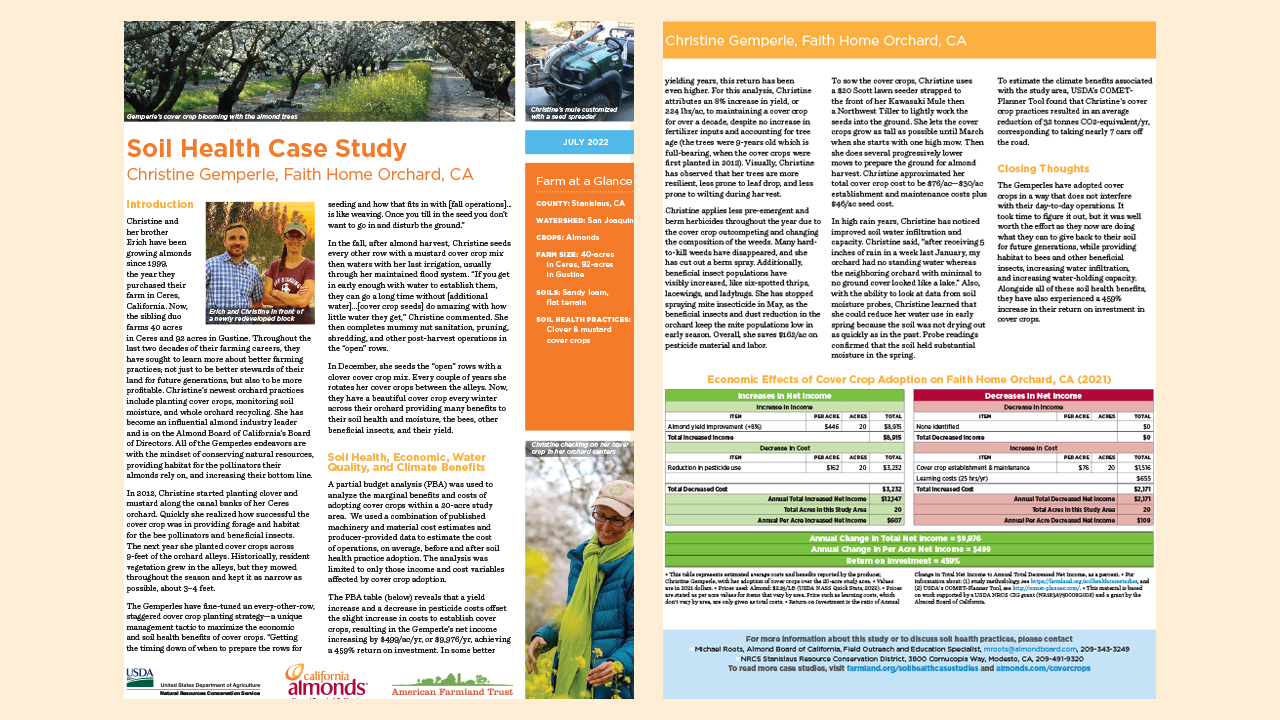Gemperle’s trees were 9 years old when she first planted cover crops in 2012. Thanks to meticulously kept records, she credits cover crops for increasing yield by about 8% while, at the same time, reducing her pesticide and herbicide costs.
Her strategy – which has evolved through the years – is relatively simple. She plants cover crops in every other row, usually by early October. She waters those seeds during her last post-harvest irrigation of the fall. She uses the “clean” rows – those without cover crop seeds – to remove mummy nuts and prune. Once those tasks are finished, she plants her other cover crop seeds down those rows as well, usually by early December.
In addition to creating an inviting habitat for honeybees and other natural pollinators, Roots said Gemperle has reduced weed populations, improved soil moisture retention and reduced pesticide applications. She’s also saved money on labor.
“The diversity of weeds she’s seen has decreased so a lot of the hard-to-kill weeds have disappeared as the cover crop has taken over. She doesn’t have to spray as often and she doesn’t have to use as much material,” Roots explained. “She also doesn’t spray in May for mites because of all the beneficial insects that her cover crops host.”
Gemperle also has observed that her trees are more resilient, less prone to leaf drop and less prone to wilting during harvest.
“She’s found a good way to be cost-effective and get the job done in an economic manner. Especially since she’s doing all the work herself,” Roots said.
Roots added reaching out to the Almond Board or American Farmland Trust to participate in a case study can be a good way for a grower interested in determining the ROI of their existing, or potential future, cover crops. It can be used to determine the ROI of their own orchards as each situation is likely to be unique.
“Everybody implements cover crops a little differently,” he said.
Growers interested in the American Farmland Trust’s soil health calculator can learn more at the organization’s website.

